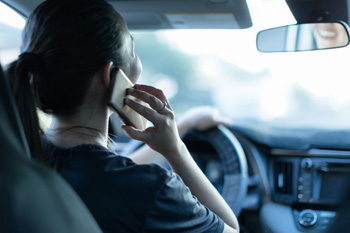OK, so maybe you were driving and talking on your cell phone, and a police officer pulled  up next to you. You probably wondered if you were in trouble. You may have wondered what the law specifies as far as driving and talking as well as driving and texting. According to
up next to you. You probably wondered if you were in trouble. You may have wondered what the law specifies as far as driving and talking as well as driving and texting. According to
Florida
There are no prohibitions on use of cell phones.
However, according to the Tampa Bay Times, new legislation in in the works. With the 2019 legislative session still more than three months away, a second bill has emerged to toughen laws about the use of cell phones by drivers.
Rep. Emily Slosberg, a Boca Raton Democrat who is one of the Legislature’s most-outspoken members on highway-safety issues, filed a bill Monday that is dubbed the “Hands-Free Florida Law.” The proposal (HB 45) would bar drivers from using hand-held wireless phones to talk, though it would allow the use of “hands-free” devices.
Currently, texting while driving in Florida is prohibited, but it is enforced as a “secondary” office. That means motorists can only be cited if they are stopped for other infractions, such as running a stop sign or speeding.
Slosberg’s bill would make texting or talking on a handheld cell phone a “primary” offense, allowing police to pull over motorists for the offenses.
However, distracted driving is another issue. Distracted driving is anything that takes your hands off the wheel, your eyes off the road or mind off driving. It is extremely risky behavior that puts everyone on the road in danger. There are different kinds of driver distractions:
Visual
Taking your eyes off the road
Manual
Taking your hands off the wheel
Cognitive
Thinking about anything other than driving
Texting requires all three types of distraction, making it one of the most dangerous of distracted driving behaviors. However, this is not the only cause of distracted driving. Other common distractions include: tending to kids or passengers in the back seat, eating, watching an event outside of the vehicle, interacting with passengers, unsecured pets, putting on makeup or grooming, adjusting radio or climate controls, checking your GPS app or system and even daydreaming.
To successfully avoid a crash, a driver must perceive a hazard, react and give the vehicle time to stop. Driver perception distance, or the distance a vehicle travels from the time a driver sees a hazard until the brain recognizes it, and reaction distance, the distance a car will continue to travel after seeing a hazard until the driver physically hits the brakes, dramatically affects a vehicle’s stopping distance. Even a focused driver going 50 mph will travel nearly the length of a football field before coming to a complete stop.
Alexander Truluck focuses his practice as a criminal defense attorney in Clearwater, Palm Harbor, Largo, Dunedin and the Tampa Bay area.
For more information, visit our website at http://www.criminallawyerclearwaterflorida.com
or call (727) 799-3550.
